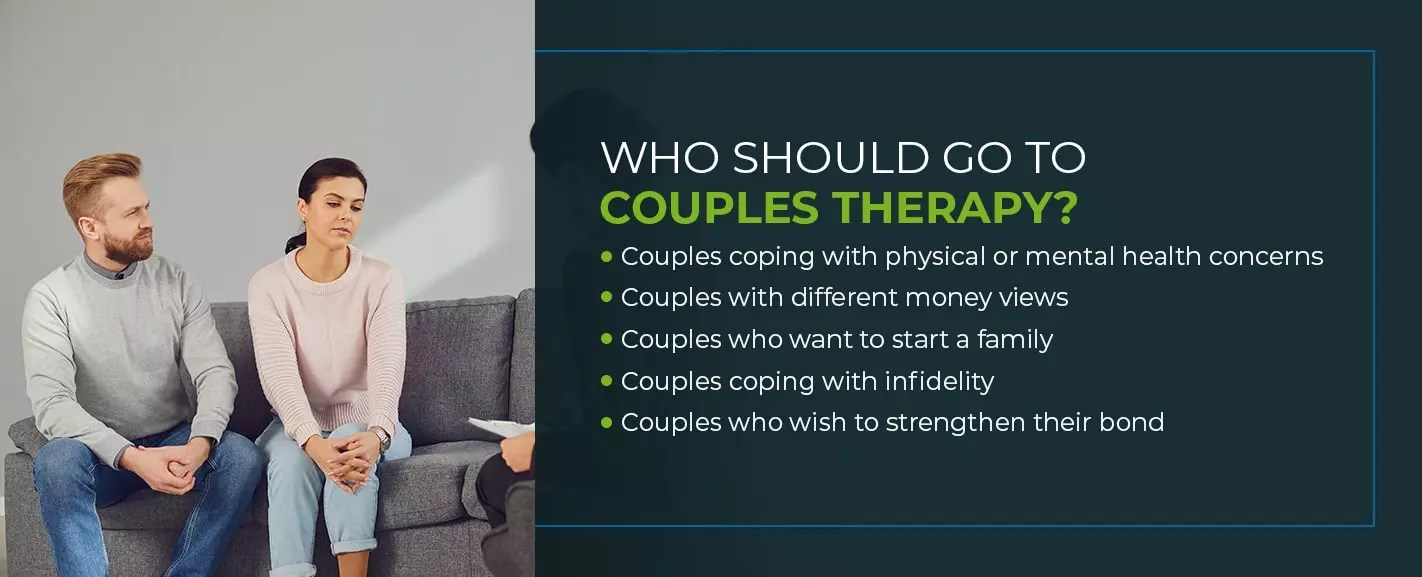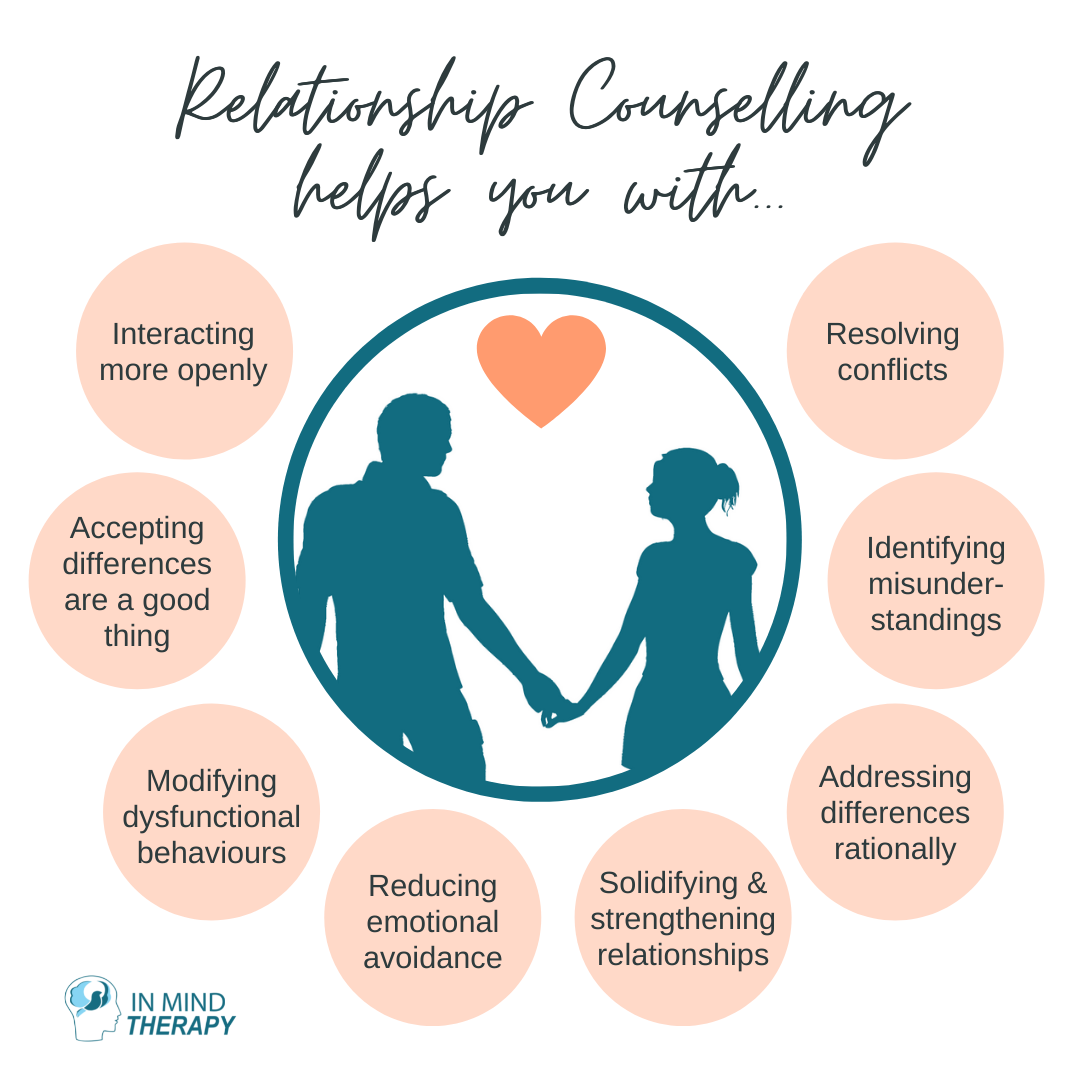The Main Principles Of Aim Point Counseling
Table of ContentsThe Aim Point Counseling StatementsThe Aim Point Counseling StatementsThe smart Trick of Aim Point Counseling That Nobody is DiscussingThe Aim Point Counseling IdeasGetting My Aim Point Counseling To WorkWhat Does Aim Point Counseling Mean?
The longitudinal design includes a pre-treatment survey and two follow-up surveys at 3- and 12-months post-intervention. The study is established in 8 Relationships Australia Victoria centres, throughout metropolitan, external suburbs, and regional/rural sites. Relationships Australia, a non-government organisation, is the biggest provider of pair therapy and relationship solutions in Australia.
These high rates of partnership breakdown have actually been consistently associated with negative health consequences for both grownups and youngsters complying with divorce/separation.
Aim Point Counseling Things To Know Before You Get This
The impacts of separation and separation can be harmful, study indicates that high partnership discord in undamaged pairs is additionally likely to have unfavorable outcomes.
Factors that influence the end results of these services need detailed investigation. Research study to day has determined both pair and private elements that might add to connection dissonance. These include relationship satisfaction and commitment at the pair level, and clinical depression at the private level. Durable study to review relationship-enhancing interventions in the neighborhood are scarce.
All about Aim Point Counseling
Consequently, while a lot of studies show enhancements in relationship satisfaction adhering to pair coaching, they are limited by the samples and measures utilized, largely temporary follow-up period, and analyses that do not make up the dyadic nature of couple information. Relationship commitment, based upon procedures such as the Dedication Supply (CI) [19], is another commonly explored partnership outcome.
To summarise, research study indicates that couple-specific variables in addition to specific variables might anticipate the results of pair counselling and relationship solutions. The causal direction of these partnerships, nevertheless, is much less clear. These observations are essential, since, to warrant and guide the application of connection services such as pair coaching, empirical evidence must discover both the outcomes of connection solutions and the factors that forecast successful therapy.
, at least in some European countries.

We currently understand little about the profiles of pairs who seek relationship education compared to those who look for partnership therapy, or the results of these programs. Unscientific proof recommends that there may be substantial distress amongst at least some pairs looking for relationship education additional hints and learning. Partnership education programs differ from pair counselling as they are usually highly structured, carried out in groups, and concentrate on a mix of 4 components; understanding, comments, cognitive adjustment, and skills training [45]
Aim Point Counseling - Truths
Responses entails individuals finishing questionnaires regarding their partnership (e.g. actions of social issues), and receiving information on what their scores show. Cognitive-behavioural techniques promote changing cognitions to assist in positive partnerships. These may include advertising sensible attributions/expectations around unfavorable partner behaviour [46] In abilities training, couples participate in lectures or presentations on partnership skills, and practice these during facilitator-led tasks [ 45]
These results have lingered for up to 4 years in some studies [47] Nevertheless, these meta-analyses highlight limitations in the existing literary works on connection education and learning. Especially, most of research studies entailed pairs from upper socio-economic histories that were not experiencing high partnership discord [47,48] This example account may not stand for customers that commonly present for connection education and learning.
The 9-Minute Rule for Aim Point Counseling

Extremely little research has actually examined the relative benefits of pair coaching and partnership education and learning programs. As clients are likely to self-select into these solution types, it is unclear whether particular relationship distress accounts present to each solution type, or indeed whether there is a communication between offering account, service kind and result.
(https://pastebin.com/u/a1mpoint)
Thus, we have consisted of a 12-month follow-up to gauge longer-term trends and results. The research makes use of a variety of standardized outcome steps because some prior examinations have actually been criticised for their absence of standardised assessment [50] Ultimately, the usage of statistical evaluations that presume self-reliance of data, such as t-tests, or ANOVAs, has prevailed in previous studies [ 44,49]
Therefore, we propose to use multi-level statistical modelling treatments that regulate for the inter-dependence of couple data to evaluate any therapy effects. The particular purposes of the ECC research study are to: 1. Map accounts of customers seeking neighborhood agency-based couple coaching vs. connection enhancement programs in regards to socio-demographic and connection indications (such as relationship contentment, relationship dedication, interpersonal troubles, and reasons for going to), along with health (such as clinical depression, general health and wellbeing) and health and wellness service use (eg.
2. Determine whether couple counselling and partnership education solutions boost three- and twelve-month outcomes for partnership fulfillment, dedication, and anxiety, utilizing analytical evaluations appropriate to combine information. 3. Determine the family member payments of customer elements (specific and couple) and therapy/education aspects to outcomes at 3- and 12-months, and to sustainability of end results in time.
What Does Aim Point Counseling Do?
Multi-level modelling to identify pre-post differences, controlling for dyadic (couple) degree. To add to the literary works examining the performance of community-based pair therapy. The outcomes will aid professional decision-making in community-based connection service settings, and specialist training. 3. To identify the relative payments of client/couple and therapy variables to end results at 3- and 12-months, and to sustainability of results in time.